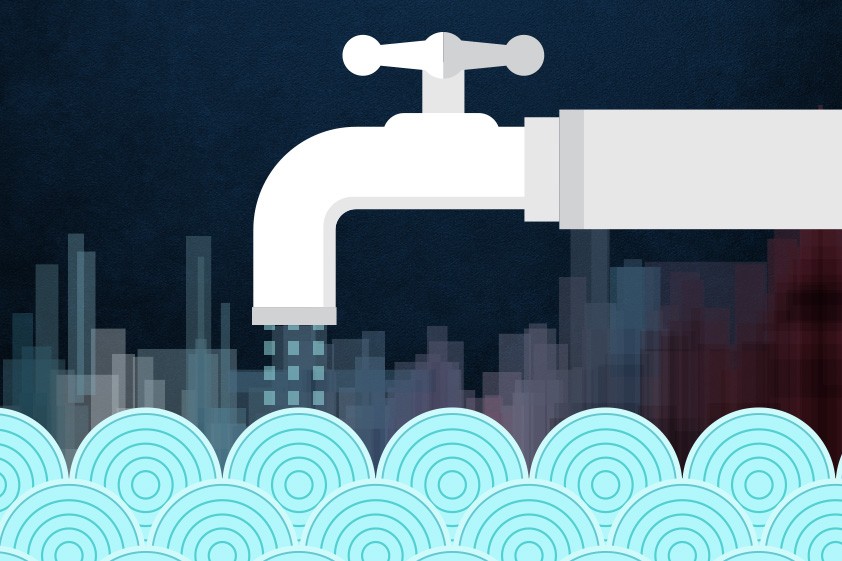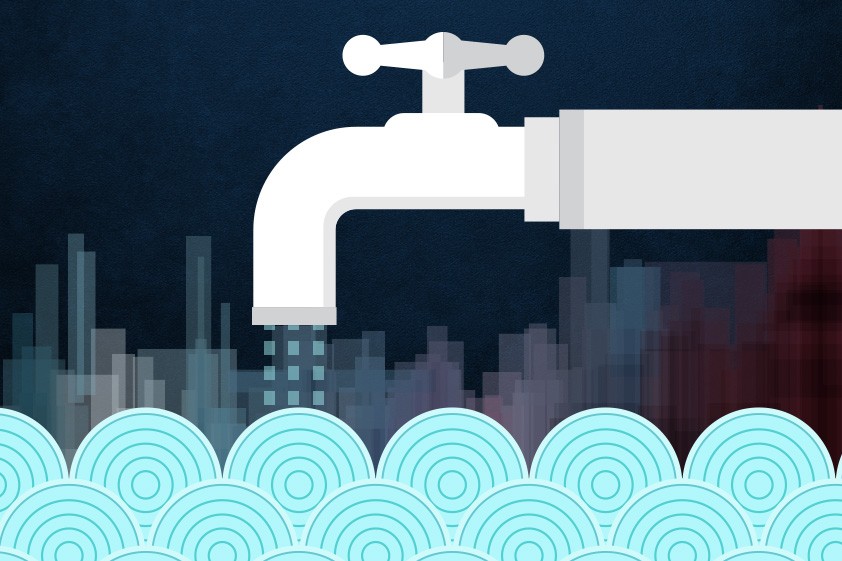

Water World
Modest additions to water infrastructure are best.

Safe water is usually close at hand in the developed world. But global warming, drought, and population growth threaten that easy access.
Does this potentially massive long-term problem require a massive long-term infrastructure solution? Not necessarily. An MIT research team has concluded that incremental additions to water infrastructure often make more sense than bigger facilities that may be needed only intermittently.
The study examines Melbourne, Australia, where a drought from 1997 to 2009 led to construction of a $5 billion desalination plant. Approved in 2007, the plant opened in 2012—after the drought had ended—and has barely been used. Instead, the researchers suggest, smaller, modular desalination plants could have met Melbourne’s needs at a lower price.
“If you build too much infrastructure, you’re building hundreds of millions or billions of dollars in assets you might not need,” says doctoral student Sarah Fletcher, SM ’12. She is lead author of the team’s paper, published in the Journal of Water Resources Planning and Management, which flows from the work of research scientist Afreen Siddiqi ’99, SM ’01, PhD ’06.
The MIT team ran 100,000 30-year water-supply simulations and evaluated a half-dozen infrastructure options for each scenario. They found that shortages tend to be acute but relatively infrequent: 80 percent of all years in the simulations had none at all.
Factoring in costs, doing nothing proved the best option in half the cases—and the worst nearly a third of the time. Meanwhile, building a plant half the size of Melbourne’s was a top-three option 90 percent of the time and never the worst option.
So, as Siddiqi puts it, “building on a smaller scale, but planning big” may be the optimal approach.